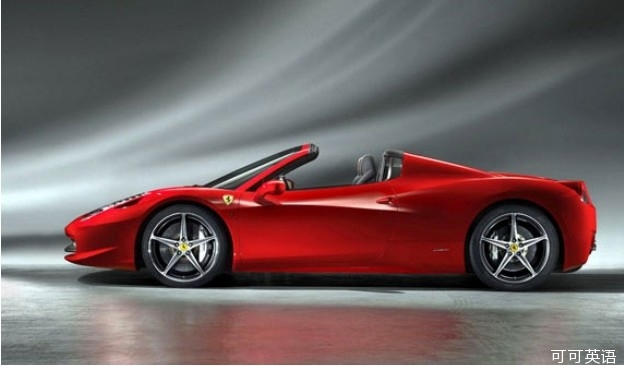
Business Frankfurt Motor Show Autoficial intelligence
商業 法蘭克福車展 人工機動智能
Where does the car end and the phone begin?
傳統汽車與智能手機交匯于何方?
SHARON can park herself. At a signal from a smartphone, a system of tiny computers activates her engine, gearbox and steering—and she reverses smoothly into a parking space. Sensors stop her from bumping into other cars or people. Pilotless cars, such as the Volkswagen Sharan (nicknamed Sharon), are no distant dream. Many people at this week's Frankfurt Motor Show were asking not only how the cars of the future will be powered, but who or what will drive them.
SHARON汽車可以進行無人自動停車:先是由智能手機象其發送停車信號,后通過一個小型電腦系統驅動汽車的發動機、變速器和方向盤,然后便順暢的自動駛進了泊位,而車輛的傳感器則避免其撞上行人或其他車輛。無人駕駛汽車已不再只是遙遠的夢想,一如大眾的一款車:Sharan(昵稱Sharon)。在這周的法蘭克福車展上,很多人已不只是詢問將來汽車將以何為能源,還得問問誰來駕駛。
"Where does the car end and the phone begin?" asked Chris Anderson, the editor of Wired magazine, at a brain-storming session organised by Audi, a carmaker. A future car will be more like a computer on wheels, networked with the surrounding infrastructure and other vehicles. Even if it comes with a steering wheel, the "driver" will have the Knight-Rider-esque option of being piloted while he video-conferences, answers e-mails or looks on a screen at an annotated view of the world whizzing by.
"傳統汽車與智能手機將交匯于何處?"克里斯?安德森作為《連線》雜志的編輯,在參加汽車制造商奧迪公司舉行的一場會議中的頭腦風暴中如此發問。未來的汽車,其實更像一種帶輪子的計算機,可以與周圍的公共設施和交通工具緊密相連。就算方向盤依然健在,"司機"也可以選擇一項有如"霹靂游俠"里的智能跑車KITT一樣的模式,保證汽車正常駕駛的同時,他可以進行電話會議,回電郵,或者盯著擋風玻璃上對飛掠而過的世界的注釋。
The threat to the taxi drivers parked outside the show is obvious. But Frankfurt's cabbies are a sceptical bunch. Driverless taxis? Not in my lifetime, says one. "It's science fiction," scoffs another.
而對于正泊車于展館以外的出租車司機來說,威脅不言而喻。但法蘭克福的的哥們對此集體持懷疑態度。有的說:"無人駕駛的出租車?我這輩子是看不到的。" 有人揶揄道:"這是科幻小說里的吧。"
In tough times, many carmakers are innovating like fury. Some are recasting themselves as "mobility service providers". This means hawking car-related software and other add-ons. For example, for those who prefer to hire or share cars—as young city-slickers increasingly do—there is software to make them feel at home in any vehicle, by instantly switching the radio and other settings to their tastes. Some carmakers are also tempting buyers with more mundane services, such as priority parking or cheap deals on fuel (whether petrol, hydrogen or electricity). Or, to help them let off steam, they might offer an annual spin with that gas-guzzling sports-utility vehicle of their dreams.
現在市場不景氣,汽車制造商們紛紛鉆研創新如癡如狂。有些把自己重新定位為"移動服務提供者",也就是說販賣車用軟件及附加產品,例如,有些人愿意租車或者幾人共用一輛汽車——特別是越來越多的年輕小市民們喜好如此,有一種軟件可以根據不同人的品味迅速切換收音機頻道或者其他設備的設定,令他們不管在哪輛車里都覺得像在家里一樣舒服。有些汽車制造商還提供了更加實用的服務以吸引消費者,比如提供停車優先權或者提供低價的燃料(不論是汽油,氫能源還是電)。再或者,有些汽車制造商可能還會一年組織一次急速試駕活動,提供油耗巨大的越野車(SUV),讓消費者們過把癮。
Even in changing times, there is still plenty of the old passion for a flash motor. Thus the covetous sighs that greeted the new Ferrari 458 Spider (pictured), which was unveiled on September 13th. Alongside it was Ferrari's first four-wheel drive, four-seater. "Different Ferraris for different Ferraristi!" exclaimed Luca di Montezemolo, Ferrari's boss. Even Volkswagen's new single-seater electric commuter, with its narrow body and wide wheel-base, looks rather like a 1950s racing-car.
就算時光流逝,人們對飛馳的汽車的熱情一如既往不曾減退。發燒友們驚嘆著迎接9月13日新上市的法拉利458型硬頂敞篷跑車,它的旁邊則是法拉利的第一款四驅四座跑車。"不同的法拉利,獻給不同的你!"法拉利的老板盧卡?蒂?蒙特澤摩路說道。而大眾公司新推出的電力單座通勤車則擁有狹窄的車身和較寬的輪胎,看起來非常像20世紀50年代的賽車。











